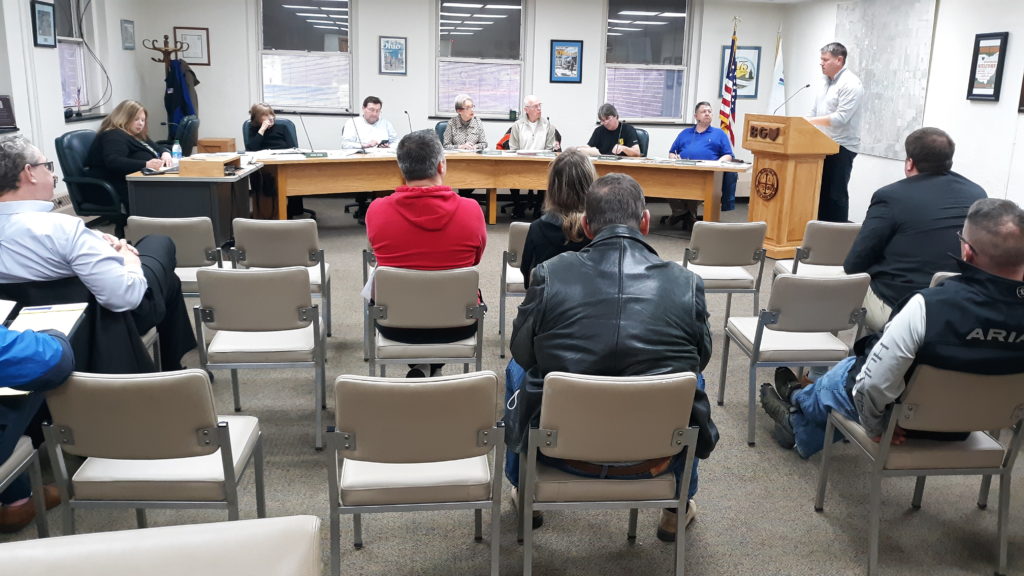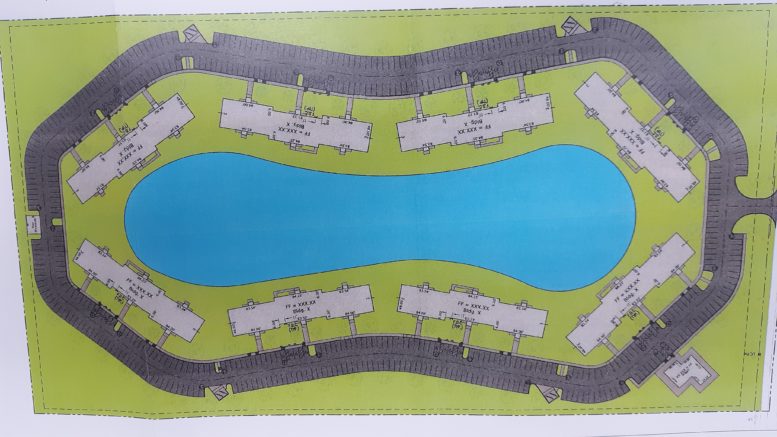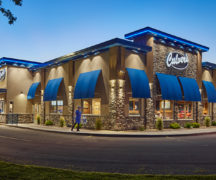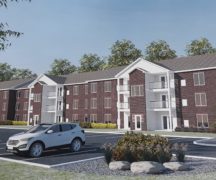By JAN LARSON McLAUGHLIN
BG Independent News
Bowling Green’s parking requirements continue to cause headaches for developers and city officials. The requirements for commercial and apartment complexes have been blamed for creating seas of asphalt in the city – and are among many items being changed in the zoning code update underway.
The current rule requires 904 parking spaces for the proposed 288-unit apartment complex planned on Dunbridge Road, between East Wooster Street and Napoleon Road.
But on Wednesday evening, the Bowling Green Zoning Board of Appeals granted a variance to the developer, allowing 576 parking spaces – 328 fewer spaces than the zoning code requires.
The vote was 5-1, with Chris Ostrowski casting the lone “no” vote.
Nathan Waggner, from the engineering firm Cash Waggner & Associates working on the project, told the zoning board that the developer has built about 200 apartment communities and knows how many parking spots are needed for this type of development geared toward young professionals.
Waggner stressed the need for such housing in Bowling Green – even more so now with new industry coming to the city.
“Everybody recognizes you’re short on units,” he said.
Bowling Green’s current zoning rules require 3.14 parking spaces per apartment unit. The normal requirement is two spaces, Waggner said. Ideally, it would be 1.7-1.9 spaces, he added.
Of the 288 apartment units, 280 have two bedrooms and eight have one bedroom.

Brian McMahon, of Danberry National, told the zoning board that such a development is sorely needed in Bowling Green.
“We are now experiencing the fastest job growth,” he said. “Bowling Green is being recognized as a place to live” since it is safe and has good public services.
“There is a need for housing if we want to attract these young professionals,” McMahon said. “They can’t afford to buy a home.”
McMahon said he has worked with this developer in six locations. “This is a good company,” he said. “It’s something that will complement your community.”
Adam Skaff, a city employee and homebuilder, echoed those comments.
“I want to see it grow and prosper,” Skaff said of Bowling Green. “I think this is a good project for the city.”
As a police officer who patrols through apartment complexes throughout the city, Skaff said none of the complexes are short of parking spaces.
“There’s an abundance of parking that does not get used,” he said.
Skaff also noted that during shift change at Wood Bridge Business Park, there is a mass exodus of employees headed to Interstate 75 to their homes away from Bowling Green. The city is missing an opportunity by not having adequate housing here, he said.
Three City Council members also offered support for the project and the zoning variance.
Council member Jeff Dennis wrote a letter to the zoning board, explaining the need for more housing.
“As I’m talking to people in our neighborhoods, some of the most frequent complaints I receive are about housing affordability,” he wrote. “Requiring developers to adhere to outdated mandatory minimum parking requirements increases the cost of new development – commercial and residential – substantially. This, in turn, increases the cost of rent and opening a business.”
Dennis also said he frequently hears concerns about neighborhood “overcrowding” as a result of older homes being converted into multi-family units and bedrooms being added to increase occupancy. Enforcing outdated minimum parking requirements makes it less affordable to build new units and makes upscaling residential homes to meet demand a more attractive option for real estate investors, he wrote.
And Dennis talked about the universal agreement among council members that the city’s mandatory minimum parking requirements are outdated and in need of serious reform.
“We have seas of underutilized asphalt in every corner of our city. This inefficient use of land is not the product of developers seeking to needlessly maximize their expense, it’s the product of our outdated laws,” he said.
Council members Bill Herald and Greg Robinette also spoke in favor of the project.
Some concerns were expressed by zoning board members, including David Phlegar, who questioned the trend of fewer people owning cars when they live in a complex that isn’t within walking distance of the downtown and where public transportation is limited.
Ostrowski asked about parking for visitors since each unit will have just two spots.
“It just gets absorbed in the two per unit,” Waggner said.
As an apartment complex manager for many years and member of the Ohio Apartment Association, Ostrowski said one of the top complaints he hears is about the lack of parking spaces.
“This is a tough one for me,” he said, noting that a 36% reduction in parking spaces seems like a lot.
Ostrowski voted against the variance. Voting in favor were Judy Ennis, Rose Hess, Hobart Johnson and Bob Waddle.




